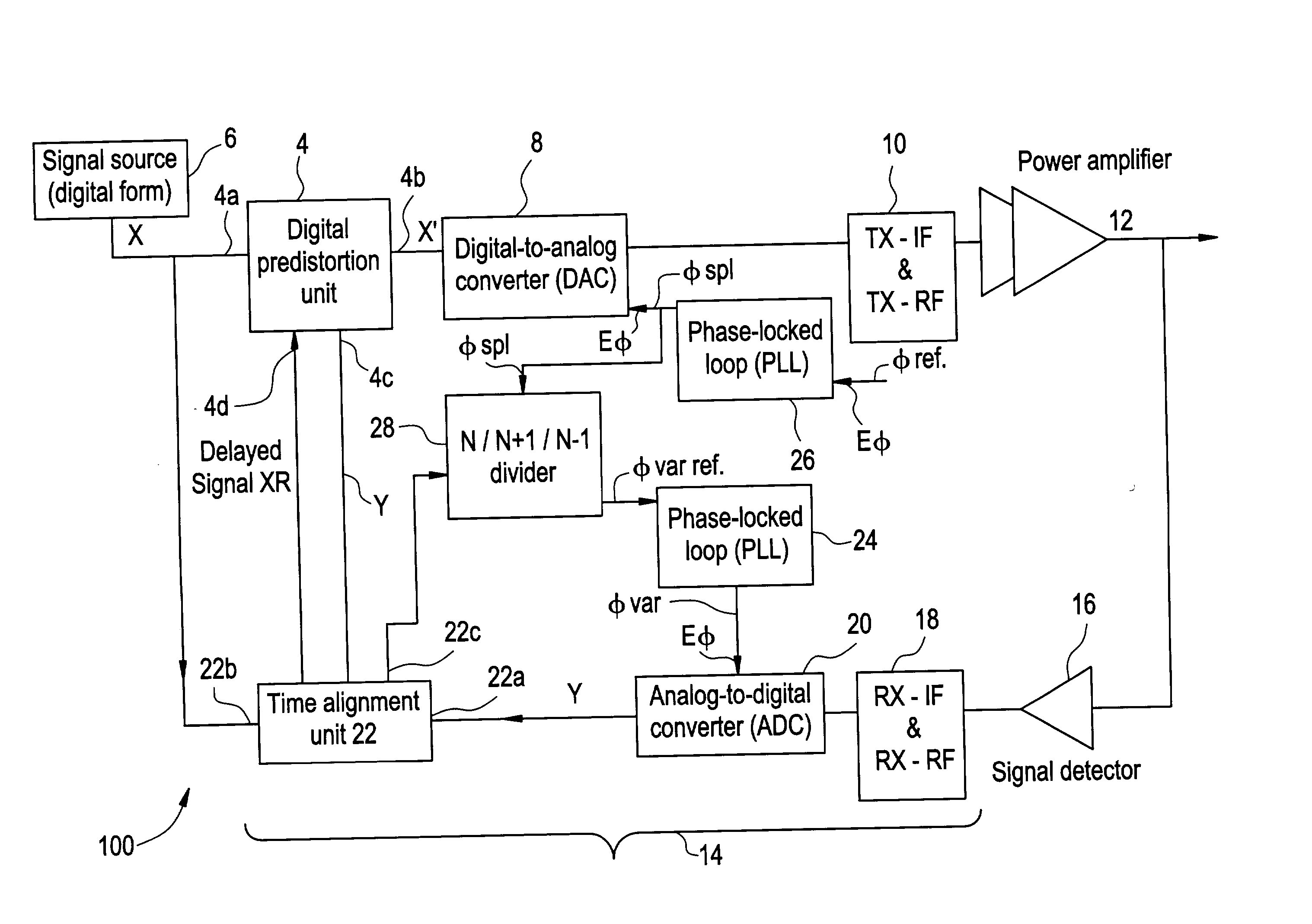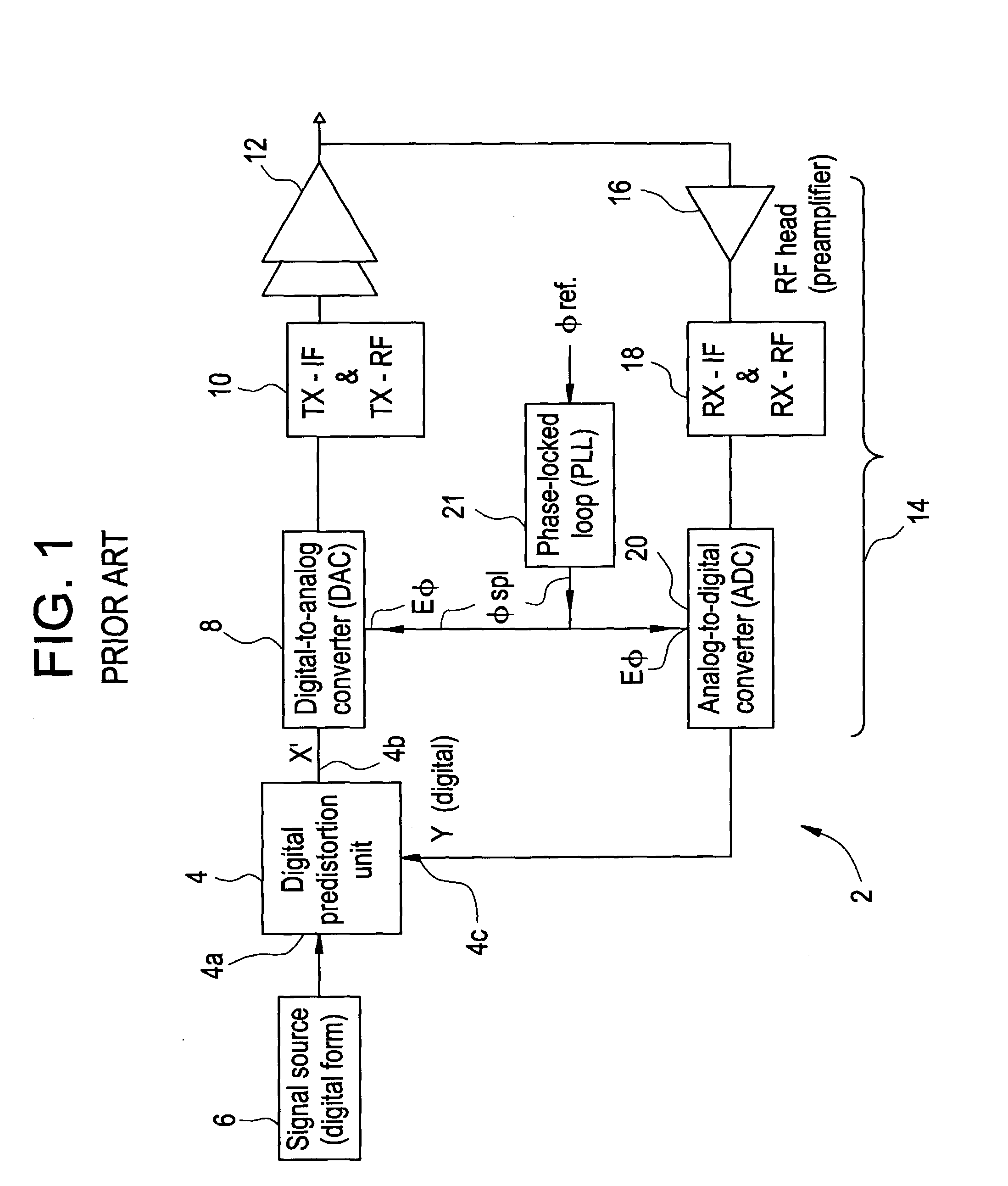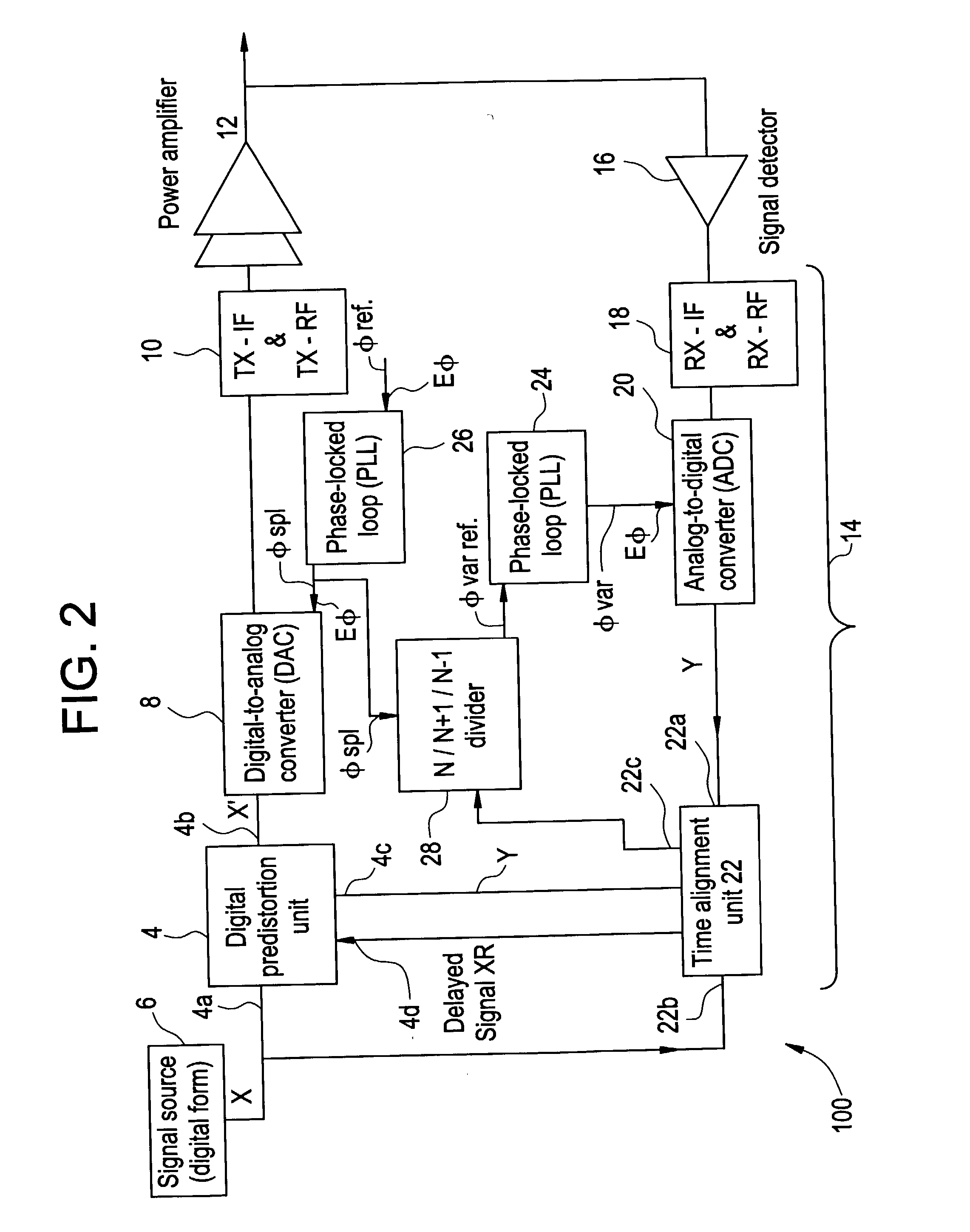Method and apparatus for preparing signals to be compared to establish predistortion at the input of an amplifier
a technology of amplifier input and comparison signal, applied in the field of signal processing, can solve the problems of ineffective correction by applying a single fixed time shift to the comparison signal (reference signal) from the input side of the amplifier system, and the existing predistortion techniques do not address this problem, so as to improve radio performance and electrical efficiency of the radio amplifier. , the effect of improving the predistortion performan
- Summary
- Abstract
- Description
- Claims
- Application Information
AI Technical Summary
Benefits of technology
Problems solved by technology
Method used
Image
Examples
Embodiment Construction
[0062] FIG. 2 shows an embodiment of the invention in the context of an amplifier system employing predistortion. In this figure, for conciseness, items analogous to those of FIG. 1 carry the same reference numbers and are not described again.
[0063] In this example, the digital signal source 6 of the system 100 produces a composite signal made up of a plurality of codes and frequencies, for example conforming to the 3GTP UMTS standard. In this case, a carrier consists of superposed orthogonal codes each carrying the information for one user. In modern techniques, it is desirable for there to be only one transmission system 100, and thus one amplifier system, for a given antenna sector or station. This implies that the same amplifier system be used not only for all the users on the same carrier but also for more than one carrier on the common radio site. One of the problems raised by this approach stems from the fact that each carrier is a signal that does not have a constant envelop...
PUM
 Login to View More
Login to View More Abstract
Description
Claims
Application Information
 Login to View More
Login to View More - R&D
- Intellectual Property
- Life Sciences
- Materials
- Tech Scout
- Unparalleled Data Quality
- Higher Quality Content
- 60% Fewer Hallucinations
Browse by: Latest US Patents, China's latest patents, Technical Efficacy Thesaurus, Application Domain, Technology Topic, Popular Technical Reports.
© 2025 PatSnap. All rights reserved.Legal|Privacy policy|Modern Slavery Act Transparency Statement|Sitemap|About US| Contact US: help@patsnap.com



